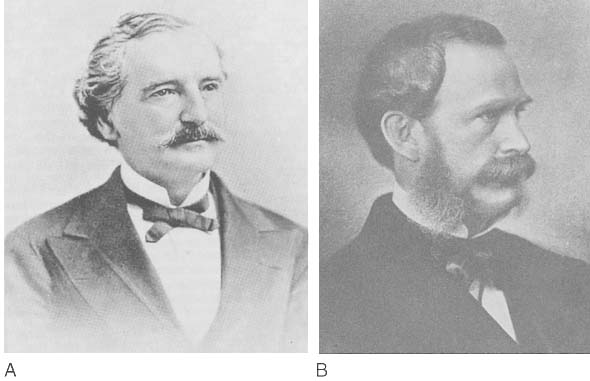 |
 |
Figure 1-5
A, Gardner Q. Colton was
born in Georgia, Vermont, and studied medicine briefly at the College of Physicians
and Surgeons in New York City. His demonstrations of nitrous oxide inhalations were
the spark that prompted Horace Wells and William T. G. Morton to use gas inhalation
for relief of surgical pain. After a long and adventurous career, he died at age
84 in Rotterdam, Holland. B, William T. G. Morton
was born in 1819 on a farm near Charlton, Massachusetts. After several business
failures, he studied at the Baltimore College of Dental Surgery, and in 1842 entered
into a partnership in Boston with another dentist, Horace Wells. This partnership
was dissolved within a year on amicable terms. During this association, the two
dentists had devised a new method for fitting dentures that required removal of all
the diseased teeth, a prohibitively painful procedure for most patients. Morton
experimented with laudanum and opium without success, and in proceeding with his
investigations, he realized that a greater knowledge of medicine was essential for
further success. He briefly entered Harvard Medical School while continuing a part-time
dental practice. During the summer of 1844, Morton, on the advice of Charles T.
Jackson, used sulfuric ether for painless tooth extractions, and the study of this
agent eventually led to his successful demonstration of ether anesthesia at Massachusetts
General Hospital on October 16, 1846. The remainder of Morton's life was spent in
efforts to patent and receive a monetary recognition for the discovery of ether anesthesia.
Broken and despondent, he died of a cerebral hemorrhage in New York City in July
1868. (Images courtesy of the Wood Library-Museum of Anesthesiology, Park
Ridge, IL.)

 |
